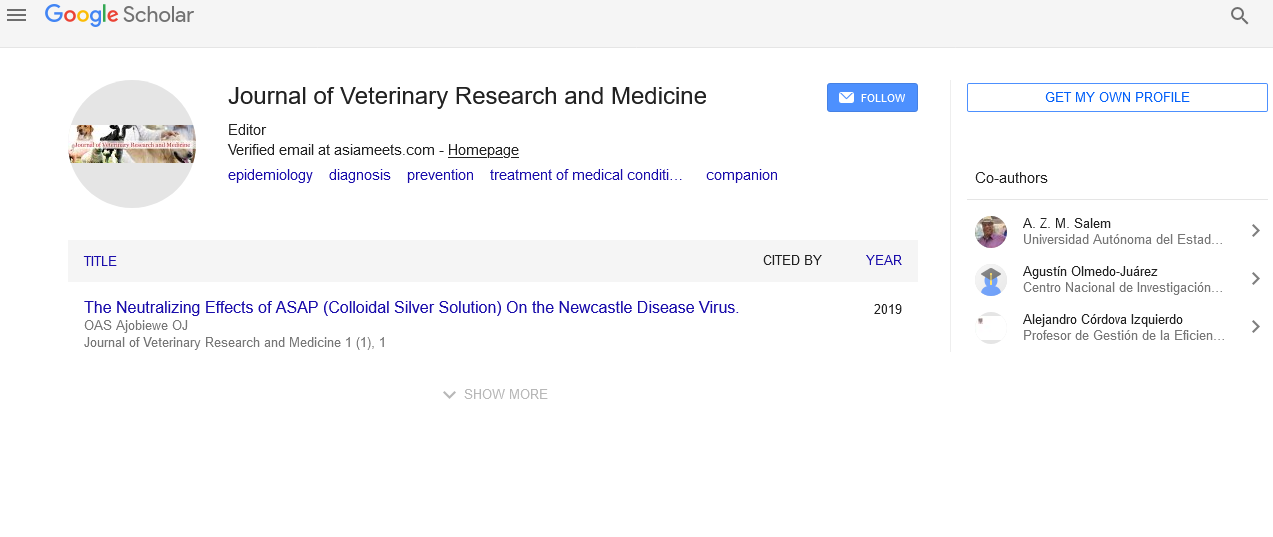High temperature effects on dairy animals
Received: 01-Apr-2022, Manuscript No. PULJVRP-22-4700(R); Editor assigned: 02-Apr-2022, Pre QC No. PULJVRP-22-4700(PQ); Accepted Date: Apr 10, 2022; Reviewed: 05-Apr-2022 QC No. PULJVRP-22-4700(Q); Revised: 08-Apr-2022, Manuscript No. PULJVRP-22-4700; Published: 13-Apr-2022
Citation: Robert A. High temperature effects on dairy animals. J Vet Res Med. 2022;4(2): 01.
This open-access article is distributed under the terms of the Creative Commons Attribution Non-Commercial License (CC BY-NC) (http://creativecommons.org/licenses/by-nc/4.0/), which permits reuse, distribution and reproduction of the article, provided that the original work is properly cited and the reuse is restricted to noncommercial purposes. For commercial reuse, contact reprints@pulsus.com
Abstract
Throughout the most recent years we have encountered a few times of heat waves, once in a while of short, different seasons of longer term. This peculiarity will, most presumably, be more successive in the years to come. Heat waves might unfavorably affect dairy cattle creation, wellbeing, government assistance and proliferation. The inquiry is whether dairy cattle ranchers and even veterinarians are adequately ready and trained to check or, surprisingly better, forestall the adverse consequences of hotness stress in their dairy cattle. This paper surveys the most important issues related with the event of hotness stress, and gives commonsense measures to neutralize and forestall the adverse consequences of heat pressure in steers
Key Words
Heat stress; Dairy; Cows
Introduction
Throughout the most recent years we have encountered a few times of heat waves, once in a while of short, different seasons of longer term. This peculiarity will, most presumably, be more successive in the years to come. Heat waves might unfavorably affect dairy cattle creation, wellbeing, government assistance and proliferation. The inquiry is whether dairy cattle ranchers and even veterinarians are adequately ready and trained to check or, surprisingly better, forestall the adverse consequences of hotness stress in their dairy cattle. This paper surveys the most important issues related with the event of hotness stress, and gives commonsense measures to neutralize and forestall the adverse consequences of heat pressure in steers.
The high temperatures can have negative ramifications for milk creation, and for generation, government assistance what’s more, wellbeing, in dairy cows, yet in addition meat cows might be impacted.
Background
Particularly high yielding dairy steers would be defenseless on the grounds that their thermo-nonpartisan zone is somewhat restricted when contrasted with low yielding cows. In any case, it isn’t plainly settled how the physiological reaction of dairy cattle to warm pressure happens and what precisely these adverse consequences involve. In addition, the actions for anticipation or controlling those impacts are frequently still issue of banter.
The targets of this audit paper for training is to give the overall foundation on heat pressure event tending to the most important issues, and to introduce, as a down to earth survey, measures for anticipation and control of some significant negative impacts connected with heat pressure.
When temperature increases beyond a given critical limit, the nonevaporative ways of heat loss appear to be far less efficient. And if temperature rises even more, the cow changes from a non-evaporative to an evaporative way. However, the latter is strongly dependent on the level of air humidity. The principal indications of warm pressure are a drop in feed consumption (0.85 kg DM less for each ascent in °C encompassing temperature), a decrease in energy balance, and regularly a misfortune in nitrogen money owed (to less feed admission), a drop in milk creation, and a deficiency of action. Concerning milk creation, it has been accounted for that misfortunes up to 600 kg or 900 kg milk for every cow per lactation happen. At a temperature of 29°C and a RH of 40% one would lose between 2% and 7% of milk; assuming that RH ascends to 90%, one would lose between 17 what’s more, 31% milk yield for every cow impacted. Each 0.55°C increment in encompassing temperature might be joined by a deficiency of 1.8 kg milk and a 1.4 kg DM loss of everyday feed consumption.
Conclusion
Heat pressure has a heap of impacts on dairy steers across the existence cycle. Though, the most normally perceived impacts are related with creation reactions, arising proof demonstrates that hotness stress significantly adjusts the invulnerable reaction of calves and cows, from the pre-birth stage through lactation. For instance, in utero heat pressure decreases aloof safe exchange paying little mind to colostrum source, comparative with normothermic conditions in late growth. Dry cows presented to warm pressure have lower immunoglobulin reactions to ovalbumin immunization, however this impact scatters with cooling following parturition. On the other hand, cows under heat pressure when dry display remainder impacts on the intrinsic arm of the safe framework in early lactation. In this paper we audit the impacts of hotness stress all through the existence pattern of the dairy cow, with specific accentuation on the effect of hotness stress during late incubation on the cow and the creating embryo, both when parturition. What’s more, the effect of modified invulnerable status under heat weight on other physiological frameworks, particularly those supporting milk creation, are thought of. At last, the executive’s intercessions to forestall and invert the impact of hotness stress are introduced.





